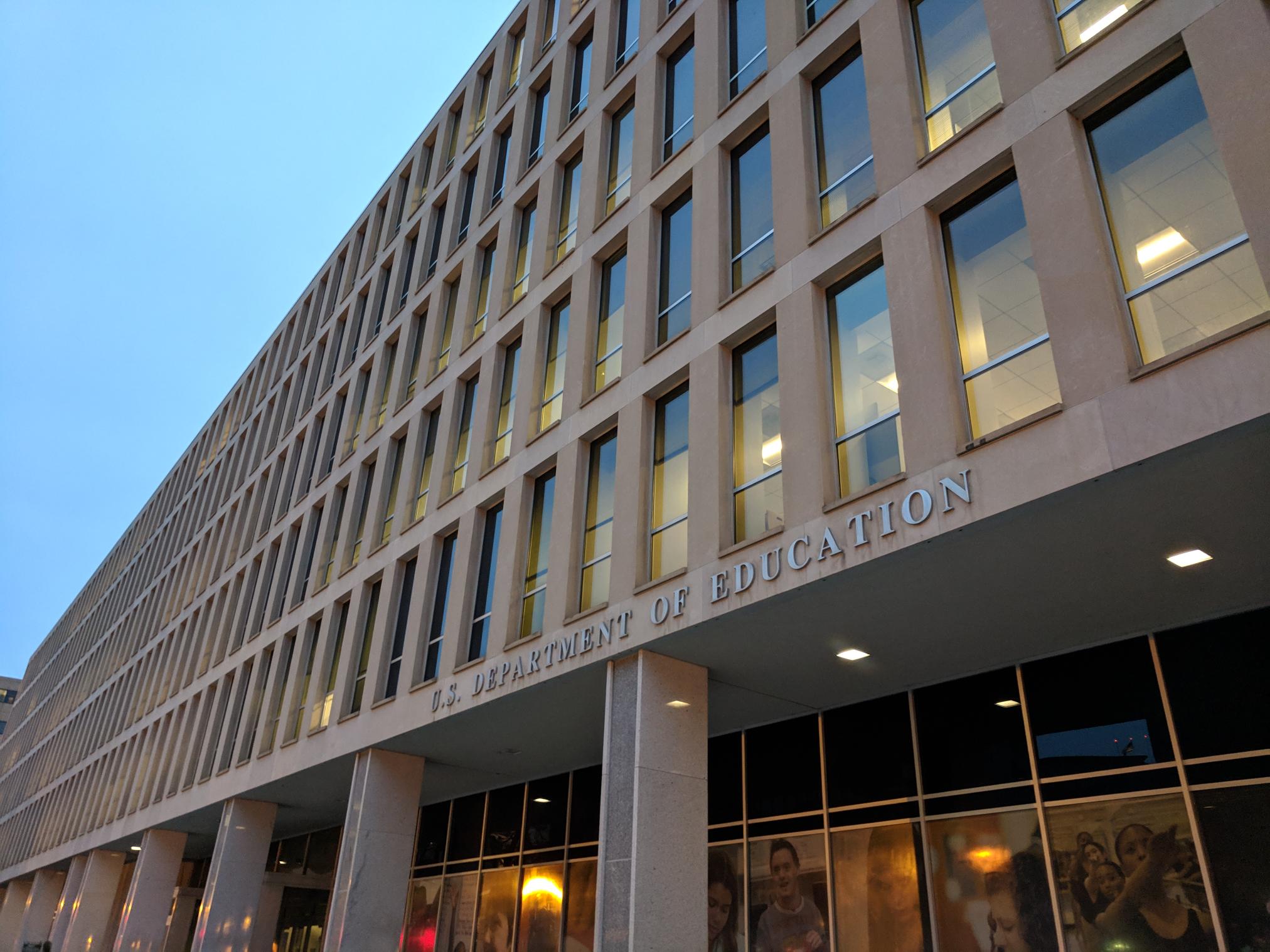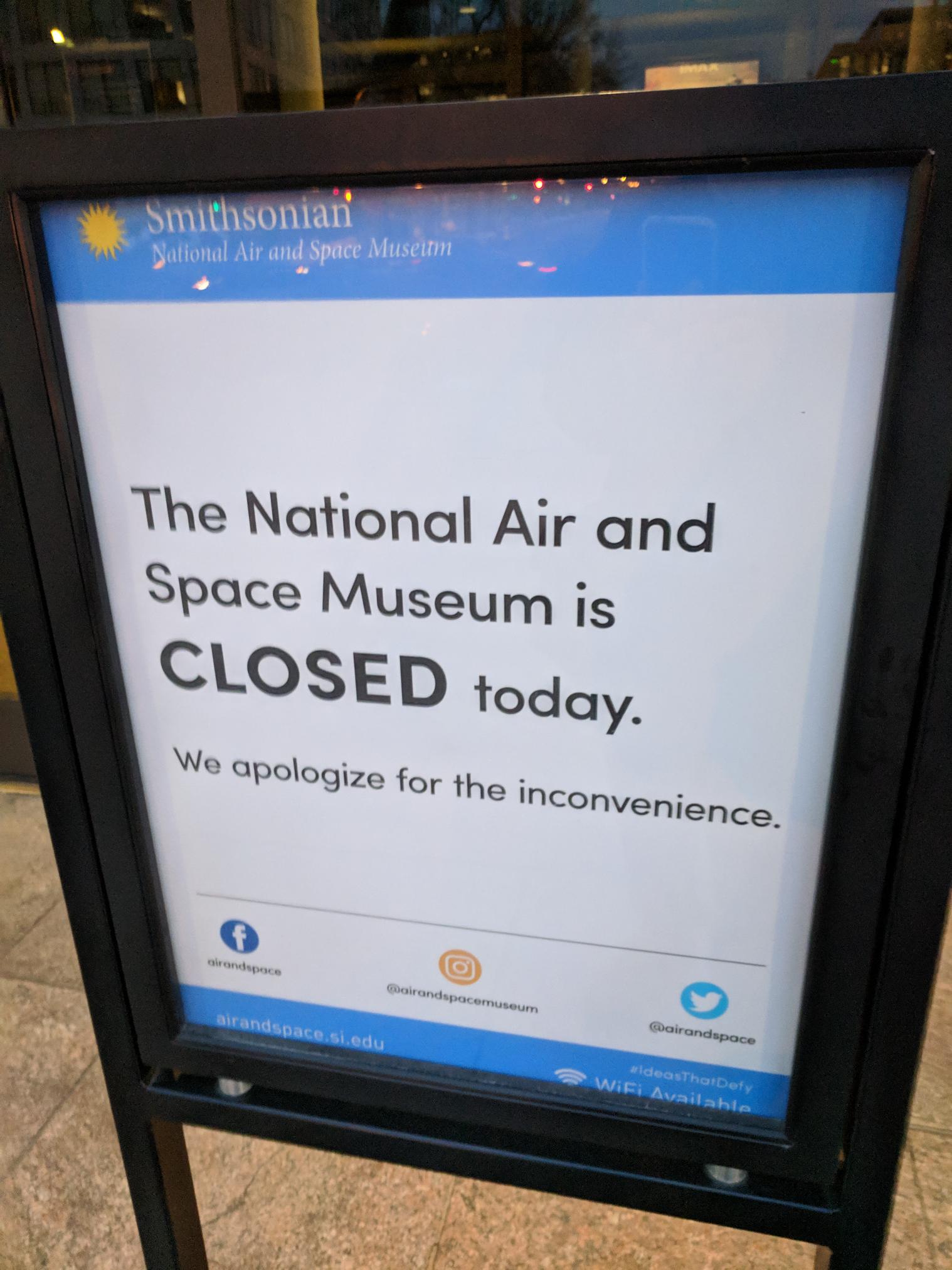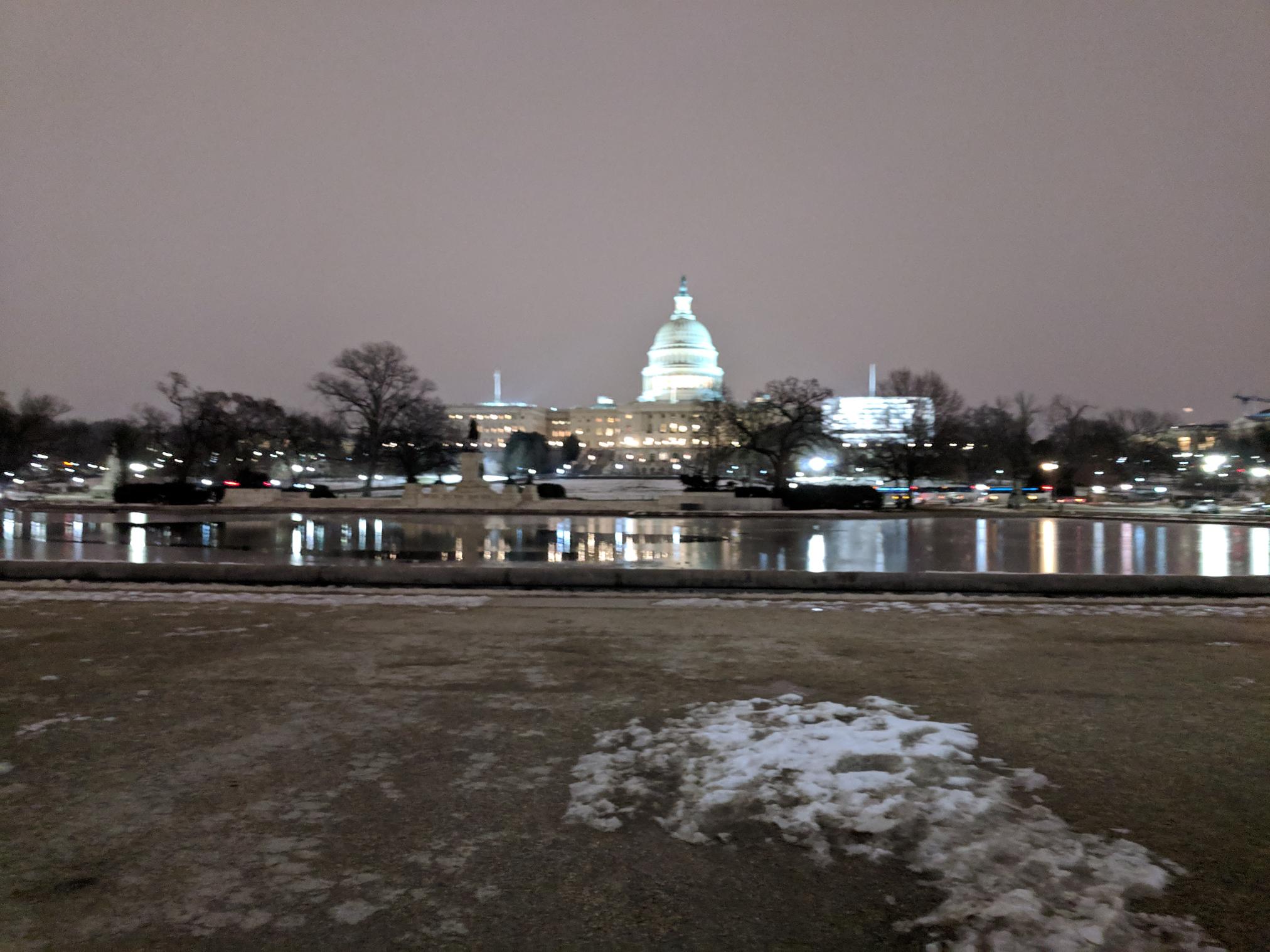ED Negotiated Rulemaking: Issue Summary and Seeking Your Input
Published by: WCET | 1/30/2019
Tags: Accreditation, Competency-based Education, Distance Education, Negotiated Rulemaking, Reciprocity, U.S. Department Of Education
Published by: WCET | 1/30/2019
Tags: Accreditation, Competency-based Education, Distance Education, Negotiated Rulemaking, Reciprocity, U.S. Department Of Education
WCET continues to cover the wide-ranging set of rule changes that are being proposed under the U.S. Department of Education’s negotiated rulemaking process. The Department is seeking input on several major changes on issues with special focus on accreditation and how to handle “innovation” in qualifying students for federal financial aid. Examples of what is being proposed include fundamental changes to the recognition of existing and new accrediting agencies, competency-based education, regular and substantive interaction in distance learning, state authorization of distance learning, and written agreements allowing institutions to contract 100% of a program to a non-accredited entity.

WCET’s Russ Poulin serves on the Distance Learning and Educational Innovation Subcommittee, which has conducted one of its three sessions. Meanwhile, WCET State Authorization Network’s Cheryl Dowd watched a large stretch of the negotiations via live-stream. We collaborated on this post to give you a taste of the complex topics being discussed. We also tried to simplify the feedback process by asking some very direct questions about each issue.
In our analysis below, we focus on issues that are of great interest to the competency-based, distance, and correspondence communities that Russ is representing. We also focus on issues that have been discussed, with the exception of the last one below. That particular one covers the “academic integrity” expectations, which appears to expand beyond distance education to ALL courses. The subcommittee has yet to tackle this issue.
Enjoy our write-up of the following issues. We’d love your feedback…
The proposed changes to accreditation are numerous and could fill an entire post on their own. We cover only one below.
In brief, the Department is proposing more competition for accrediting agencies by making it easier for more agencies to be created. Frankly, the two of us would like to know more about this vision. On the face of it, a competitive model does not seem to be fully compatible with the oversight role expected of accrediting agencies. We can see where they are trying to promote accreditors that are focused on sub-sectors or encourage more innovation, but is this the way to accomplish that goal?
Among the issues related to accreditation, the subcommittee reviewed the Department’s proposed language describing the Department’s scope of recognition of the geographic territory of accrediting agencies. The Department staff indicated that the proposed language was designed to provide clarification to an existing capability regarding overlapping geographic areas of accrediting agencies. For example, a regional accrediting agency may authorize institutions within the same geographic area as a state accrediting agency. The purpose of the existing regulation was described to encourage competition among accrediting agencies.
Despite the assurance of the Department staff that the new language does not change current available practice, members of the subcommittee expressed the following concerns:
Questions:
In 1992, the definitions of “distance” and “correspondence” education were written in opposition of each other. If 50% of an institution’s courses or 50% of an institution’s students are correspondence students, then the institution is ineligible to disburse federal financial aid. Embedded in the definitions is the concept of “regular and substantive interaction,” which has been the subject of guidance from the Department, but is still a fuzzy concept to many in the postsecondary world. In the Department’s guidance and in audit findings, the focus has been on activities by the instructor, which seems to define “instruction” more than “interaction.” There have also been questions about who qualifies as an instructor.
There are huge implications in the outcomes of this issues for distance education, competency-based education, and consumer protection. Remember that the ultimate goal for the Department is to design a way for them to determine what counts and does not count for aid eligibility. It would be nice to have a more outcomes-based alternative, but it is unlikely that will fly.
Questions:
As mentioned above, if an 50% of an institution’s students are declared to be “correspondence students,” then that institution is ineligible to disburse federal financial aid. Previously, there was no guidance on how to calculate which students are distance or correspondence. The Department proposes that a “correspondent student” is one “whose enrollment during an award year was entirely in correspondence courses. This is a small change that could have a big impact on institutional eligibility.
Questions:
One of the proposed changes that received the most discussion the proposal for institutions eligible to disburse financial aid to contract with an ineligible institution or organization. Under current regulations, the ineligible institution is allowed to offer less than 50 percent of the educational program. The proposed change would remove that cap and allow an institution to contract out as much as 100 percent of a program.

Negotiators expressed considerable worry about the possible ramifications of allowing an institution to contract the entirety of program. What controls would the institution have over the program? Could this lead to more fraud?
Questions:
The Department’s proposed changes included the elimination of the currently delayed 2016 State Authorization Regulations. However, the Department shared that the initial discussion from the subcommittee has caused Department leadership to change their thoughts from eliminating the regulations to now understanding that the concepts are important to keep, but there is the need to determine what must be changed or clarified. The official from the Department leading the subcommittee discussion on this issue reiterated that, prior to 2010, there was no Federal regulation related to state authorization for activities that occur outside of the state of the institution. The purpose of the regulation, he explained, was a hook to require that institutions follow the states’ laws for activities in order to participate in title IV programs.
For the definition of a “state authorization reciprocity agreement” (as included in the 2016 regulation), not all committee members concurred as to the interpretation of the language surrounding enforcement of state laws versus reciprocity agreement standards. The Department provided the letter from former Undersecretary Ted Mitchell describing the intent to support that the state would agree to use the standards of the reciprocity agreement. It was additionally discussed that most states went through a legislative process to participate in SARA, which is a voluntary reciprocity agreement for the states.

Several concepts for state authorization regulations were underscored as important. First, that elimination of the regulations would be bad for consumers. Second, that reciprocity provides a less onerous and less expensive alternative to state by state authorization for activities than was available when the regulation was first introduced in 2010. Third, that students in professional licensure programs should be made aware whether the program will lead to licensure where the student is located when taking the program.
Questions:
The Department proposed language intends to acknowledge asynchronous courses in a framework that clarifies or identifies an academic week and an academic year for the purposes of Title IV disbursement. The Department indicated that asynchronous coursework has been stated in the regulations for approximately ten years, but that a revised definition is needed to address that asynchronous coursework is not always structured with specific intervals in the same manner as synchronous coursework.
Several members of the committee expressed confusion over the proposed language and the Department’s attempt to create language compatible for all asynchronous modalities: correspondence, distance education, and direct assessment. A few committee members expressed the concern that the proposed language did not sufficiently address assessment.
Questions:
Subscription-based programs forego the usual quarter, semester, or tri-mester structure and allow a student to take a specified number of credits over a set time period for a fixed price…or some variation on that idea. The student is not confined to a specific time period to complete that coursework within that term. Not surprisingly, that model does not fit well with traditional financial aid disbursement schema. The Department is attempting to define a subscription-based program and the aid processes for students enrolled in one.
Question:
Most institutions choose between the credit hour or clock hour to measure student learning and progress through a degree or certificate program. The clock hour has typically been used by practical programs, such as cosmetology or truck driving in which all (or most) of the learning is through direct instruction or hands-on experiences. Some clock hour programs are using a hybrid approach and it is possible that some (computer programming?) could be conducted completely at a distance. The clock hour definition previously did not include distance education courses. The proposed definition includes the definition of “academic engagement,” which has been previously used in calculations of financial aid refunds for students who have dropped out of distance courses without notifying the institution. Since the notion of “academic engagement” is used in multiple place, Russ asked the Department to pull it our as a separate definition.
Questions:
This proposed change focuses on the requirements that institutions assure that, “the same student who participates in and completes the course or program and receives the academic credit.” In other words, assure that students are not cheating on their exams, papers, or other academic work. The proposed change seems to expand this requirement to ALL instruction, not just distance and correspondence courses.
This proposed change has flown under the radar and you may want to pay attention. It was not discussed in the subcommittee, yet.
Questions:
If you wish to learn more about negotiated rulemaking, we thank Higher Learning Advocates for providing a “101: Negotiated Rulemaking” summary of how the process works. The rulemaking process is slated to end by the end of March. The Department maintains a great web page with background documents, a list of negotiators, and links to recordings of the sessions.
The subcommittee meets again on February 11-12 and its final meeting is March 11-12. This will go by quickly.
We invite input either through responding to this blog post or direct communications with us. Understand that we’re getting lots of feedback and may not respond to you promptly or give you the proper thank you for taking the time to provide input. Thank you for doing so.

Russ Poulin
Senior Director – Policy, Analysis, and Strategic Alliances
WCET – The WICHE Cooperative for Educational Technologies
rpoulin@wiche.edu

Cheryl Dowd
Director – WCET State Authorization Network
WCET – The WICHE Cooperative for Educational Technologies
cdowd@wiche.edu

5 replies on “ED Negotiated Rulemaking: Issue Summary and Seeking Your Input”
There is so much here that might be worthy of comment. At a minimum, the department does not seem to understand what accreditors do and don’t do. No accreditor can give a college the authority to offer a program unless that accreditor is also a government entity such as New York or, for some purposes, the California Bar. Regional and national accreditors mainly certify comparability.
Also, state laws trump, you’ll pardon the expression, the policies of accreditors. If Colorado law says that nurses have to take three semesters of French, neither NLN nor the HLC can compel a Colorado college to do something different. Argue, yes; compel, no. States have often deferred to accreditors, but that’s because of trust. If that trust melts away because Wiley Coyote becomes an accreditor, the department will have to regulate at a much higher level, probably requiring new statutes superseding state laws, which they are unlikely to get.
One net effect of allowing all kinds of new entities to serve as gatekeepers in order to allow access to federal money is that transferability of credit will shrivel, the opposite of what I thought governments wanted.
Instead of decoupling the government from the accrediting process, the current department leadership seems to want to get their grasping forepaws further into the honey jar. At some point the states will start pushing back, and it won’t be just blue states. I wish they paid some attention to how state laws work.
[…] it is important to be following the negotiated rulemaking taking place in Washington over the next couple of months, it may be helpful to understand and remind your colleagues on […]
[…] from someone who is immersed in the process. We will briefly update you on some of the issues that we highlighted in our January 30 post and ask for your feedback on some […]
[…] blog post continues our series of updates on the negotiations (see January and February posts). I highlight a few of the key recommendations that will be made to the main […]
[…] ED Negotiated Rulemaking: Issue Summary and Seeking Your Input – 1/30/2019 and Negotiated Rulemaking: What Happened with State Authorization and Licensure Notifications? – 4/17/2019 […]